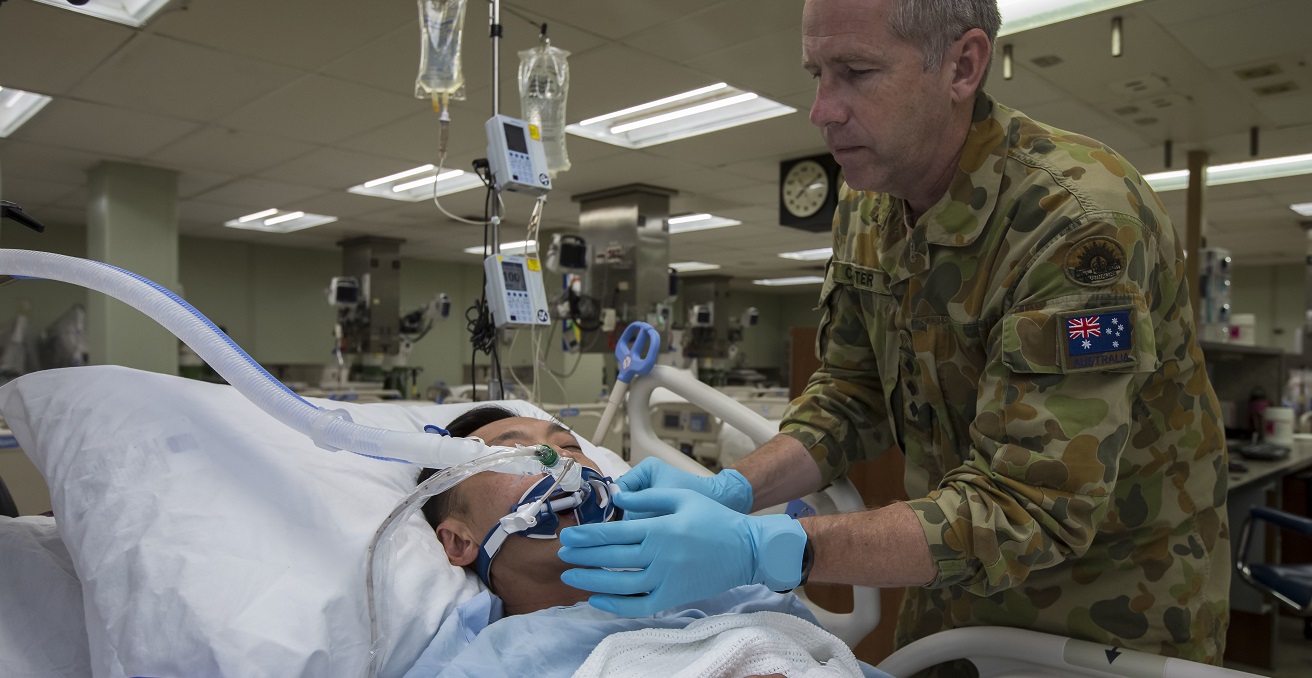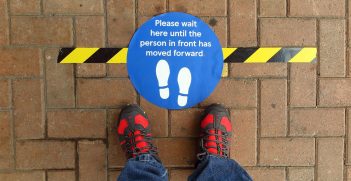Managing Expectations of a Bigger Role for the ADF in Responding to Coronavirus

As the nation requires, Australia’s military is stepping up to the plate to address the COVID-19 crisis. But as a small organisation designed and deployed to do a very different job, this is not a “fix.”
Recent calls for the military to do more in the COVID-19 crisis seem likely to devalue what the Australian Defence Force (ADF) is already doing and about to do – and may raise unrealistic community expectations. As it did in response to the recent bushfires, the ADF can and will provide vital supplementation to the frontline response of the states and territories which will deliver enormous psychological as well as practical benefit.
There is a debate beginning concerning whether the ADF should be organised and structured with a greater emphasis on non-military threats and on aid to the community. This is a discussion that extends beyond the military. Prof John Blaxland at ANU has proposed an Australian universal scheme for national and community service, which would focus largely on the civilian service dimension. However, a subset of voluntary military national service is relevant to the parallel strategy debate about how to generate larger conventional military capability as the international security environment deteriorates. All these debates should rest on a basic understanding of what we have now.
The ADF is very well equipped and trained but is modest in size compared to the armed forces of economic peers. Crucially, it must defend a vast continent – giving it a very low force to space ratio. The Australian military has one serving member for each 96 km² of domestic territory, compared to the British with 1.3 members per square kilometre, or the French, with 1.5 per square kilometre. Even with a military four or five times as big, the ratio problem remains.
The strategic approach for using Australian forces to defend the continent has always assumed a key role for naval power, and subsequently, airpower, to prevent invasion and, beyond that, fluctuated between territorial defence and expeditionary roles for the army. However, the overarching “grand strategy” has not changed since 1901. Australia ultimately chooses to depend upon a military alliance partner with the capacity to come to our aid in a crisis, in order to avoid the high financial and social costs of self-defence capability against both invasion and blockade.
To maximise the chances of being protected by this partner, Australia has historically paid its dues by fighting alongside them when called to do so. In order to do this or respond to threats or disasters in our immediate region, extant government guidance specifies a conventional army that can maintain one brigade continuously on an offshore operation, with a battalion group performing a task somewhere else. “Plan Beersheba” envisages deploying in turn each of the three (regular) combat brigades of about 4000 people, reinforced by a composite reserve unit and “slices” from the specialised Aviation, Support, and Sustainment Brigades – a force of perhaps 6000.
Additionally, Australia has a very capable special forces organisation that for two decades has been doing the “heavy lifting” of succouring the alliance with the US. It also maintains the capacity to respond to terrorist threats that are beyond what state police forces can address, or that are beyond Australian shores. They also may conduct strategic reconnaissance and unconventional tasks for the government. This is a very heavily committed force that is smaller than the combat brigades.
In extremis, all three regular brigades might theoretically be similarly reinforced and concurrently employed for a limited period, especially within Australia. This would leave several thousand trained members still available within reserve formations and similar numbers amongst the staff of army schools and logistic establishment and those in similar roles in the Navy and the Air Force. That is about all the ADF could field.
Importantly, the conventional army is not postured to deploy within Australian territory – rather its combat units are mainly positioned in the north-east of the country where they are best poised to respond to regional crises. The army could, of course, be redeployed back to the population centres, but at the price of no longer being positioned to respond to their primary task. Moreover, capacity to provide aid to the civil population of any personnel-intensive kind is further limited by their numbers. In the 1980s, the army was larger and had a primary role to defend Australia from the unlikely prospect of an attack by raiding forces. At that time, noting that it had to leave forces in place to defend its own bases, it planned to provide company groups of about a hundred people to defend about 20 key points around Australia.
The government could choose to use the military to secure various elements of physical infrastructure as well as continuing to support vital logistic efforts and assist police. It is important to do the latter without damaging public trust in the ADF, and therefore absolutely crucial that commentators have the knowledge to dismiss alarmist ideas of military enforcement. Even supposing the entire regular force was devoted to that task, a quick division of the numbers shows that the army would struggle to field more than 30 companies. Yes, that is enough to secure key points or respond to limited and localised unrest in support of state police authorities, but dividing these across the states and territories would provide only a handful of companies for each city or part of a large city. Any discussion of a controversial nationwide enforcement role for the military when it simply doesn’t have the numbers to do that is counterproductive.
A possible role of chemical, biological, radiological, and nuclear defence (CBRN) specialists, their decontamination equipment, and mobile hospital units were all raised earlier. They do, but there is only one CBRN unit, which has a primary focus on terrorist threats. It is a unit with unique and highly specialised capabilities. Employing members to train others may offer good value, but redeploying it as a basic decontamination unit probably would not. In a similar vein, the army only has one fully deployable hospital unit ready to go, plus perhaps a couple of smaller facilities and some capacity on ships. This reflects a health structure to sustain a single expeditionary brigade overseas. While we can expect ADF medical resources to be deployed, we should be realistic. The entire ADF medical capacity only has a fraction of the capacity of a modern civilian hospital and much of that is already committed to keeping the rest of the force functioning. However, working less directly through its logistic and engineer units in particular, the military has the unique ability to assist in delivering materials and facilities for civilian medical professionals.
At this stage the ADF has deployed about 2000 people to Operation COVID-19 Assist and it seems that the ADF will continue be used, as it was recently to support firefighting efforts during the bushfires, to provide support and assist specialists. We can expect a massive effort to serve the nation, playing a vital material and psychological role by filling critical gaps domestically and stepping up to assist under-resourced regional neighbours. Yet the ADF COVID-19 effort has to be paced for the longer term, without compromising the ability to defend against other threats. Should the public not recognise the modest size of the ADF resource, they may not fully appreciate its achievements. If the Australian community wants the military to play a materially bigger role in future crises such as the present one, or be better prepared for conventional threats, then they need to be prepared to pay for a much bigger military – both financially and in terms of having their daughters and sons serve.
Dr Charles Knight is a senior researcher at the University of New South Wales, Canberra and an adjunct lecturer at Charles Sturt University. His Masters research analysed vulnerabilities to asymmetric attacks in cities and his PhD examined coercion during counterinsurgency – both informed by field research in the Lebanon and Cambodia, as well as by uniformed service with the RAF, British and Omani Armies, and in Asia. In Australia he served in 1 Commando Regiment, commanded 2/17 Bn, Royal New South Wales Regiment, spent a decade in Special Operations development, drove reform of close combat training, and wrote the Australian Army urban doctrine.
This article is published under a Creative Commons Licence and may be republished with attribution.





